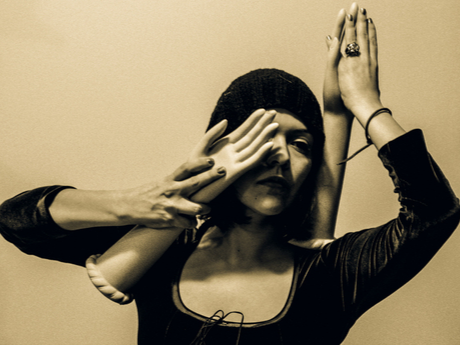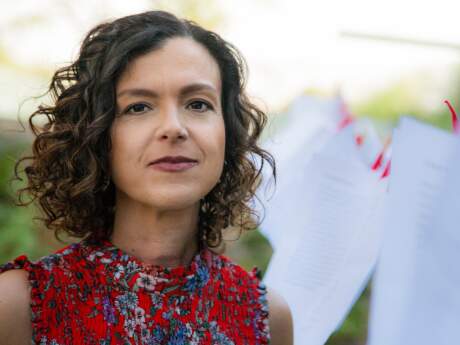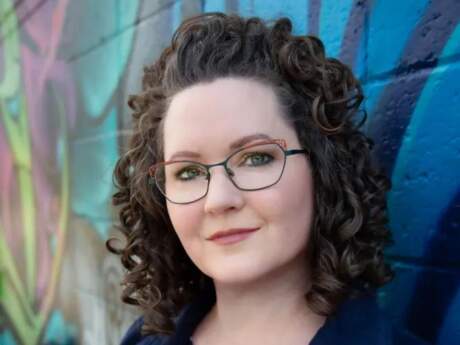In Their Own Words
Jennifer Tamayo on the opening of “YOU DA ONE”

YOU DA ONE (an excerpt)
I. I AM THE PART OF THE SKELETAL BONE OF YOU HOW/
II. DOES YOUR HEAD YOUR HATE YOUR BODY
III. WHICH OF OUR ORGANS ARE THE MOST SIMILAR
IV. IF YOU, THE FATHER, IS THE DEATH OF ALL THINGS, YOU LACK AT ME & FEEL NARCISSUS
V. IN THE AGE OF THE NEW INTERNET WHO SHOULD I LOVE
VI. WHAT IS IT TO HAVE FALLEN INTO MULTIPLE PIECES AND HAVE THOSE PIECES SKATTERED/SKITTLED
VII. SIC SIC SIC SIC SIC
VIII. ONCE I DANCED WITH A MAN YOU LOOKED LIKE AND I HAD RIPPED THE FACE FROM OFF YOUR BODY
IX. IN THE TREMBLING MOMENT OF OUR FIRST EMBRACE I'LL KISS YOU SO I CAN UNDERSTAND
X. I LOOKED UP THE POEM "DADDY" BY SYLVIA PLATH BUT IT HAD ANYTHING TO DO WITH US
XI. HOW DO YOU BEHAVE IN ME—EVERYTHING LIKE THE INTERNET
XII. WHEN I TOUCH YOU TRANSPARENT, WE WILL FEEL ALL OUR BAGS OF ASHES
XIII. I CAN SMELL YOU
XIV. I REMEMBER THE SPINE OF THE BLANKET YOU GAVE ME AND THE MEMORIES OF MONEY
XV. YOU ARE NOW A FAT MAN—HAVE YOU EATEN ALL THE CHILDREN
XVI. IF WE TOUCH, LET ME BE THE TALLEST CREATURE
XVII. THIS IS NO SINCERITY
XVIII. I MAY SAY I HAVE NO INTEREST IN WHAT YOU DO & I WEAR A SHAMED WITH THESE PANTS
A. BUT I'LL REALLY BE TRYING TO EAT YOU
XIX. DO INTRODUCE THE OEDIPAL HERE
XX. THERE IS A CHEMISTRY I WANT TO KNOW ABOUT LIKE HOW YOU ARE MIXED IN MINE
XXI. WILL YOU WANT TO KISS ME LIKE YOU KISSED MOM WHEN SHE WAS MY AGE
XXII. HOW MANY CHILDREN & HOW MANY LEGS
XXIII. TO EASE THIS I WRITE A SCIENCE FICTION ROMANCE OF THE FATHER-DAUGHTER DANCE
Introduction by Christopher Soto
Jennifer Tamayo's poetry is one of interruption, outspokenness, lawlessness. The first time that I encountered her work, was during a reading in Oakland. Tamayo was singing her own rendition of Rihanna, then talking about consumption disorders, then pouring a gallon of milk over her head and chest. Here, the poem becomes an experience, an other-worldly self. In Tamayo's most recent collection YOU DA ONE, she writes "There's no WE here, there's barely an I." The narrator of the poems drifts into cyberspace. The narrator of the poems drifts into spanglish, thoughts of a family in Colombia, into lovers and melodrama. The narrator shakes the reader. Tamayo's poetry is the antithesis of dull, antithesis of confined or monotonistic. YOU DA ONE is a splurging of emotions, experience, poetry.
Jennifer Tamayo on the opening of "YOU DA ONE"
I wasn't thinking anything. When I wrote this—what would later become the "Table of Contents" for YOU DA ONE—I was trying to not think anything. I was traveling to Medellin to meet my biological father and I was 28 and thinking felt like one more thing. But this became sort of impossible. My therapist told me this would be impossible. My friends told me this would be impossible. Some of my more immediate family members made this impossible—how do you feel and are you excited—and, try not to think so much. The logistics of travel made this impossible. There were plane tickets; and hotels; and itineraries. And there was language. Like, how do you say "gate"—as in, "which way is gate 9" or "my work is rooted in documentary performance poetics."
I figured a poem could be a spine of sorts. A spine for thinking and unthinking.
This spine was put together over the period of 3 months leading up to the trip. I set a goal to write 100 questions for (my/a) father every day. To locate 100 instances of thinking. If not thinking wasn't an option then, the alternative, would be over thinking. Thinking until exhaustion. Exhaustive thinking. Over writing. The first few weeks were a difficult bore—what is your middle name, what did you think when i was born, did you agree to the name Jennifer, etc.—and the following weeks were confusing: how do you behave in me, why do you scowl in photos. In the final weeks of this exercise, the content of this spine exhilarated itself—took on its own wild life: the questions come plunging out me from the toilet vowel of our history—and the interrogative mode elided the imperative. What. a lovely. surprise.
In sculpture there are subtractive and additive modes of creating. Subtractive: the process of removing material, in which the material is limited, finite. Additive: the process of adding material, in which material is, possibly, infinite. So I imagined two figures, simultaneously and in correlation, taking shape—the figure of "the daughter" and the figure of "the spine"—each adding and subtracting from each other. The spine scrapes the insides of the daughter—relieving her. In relief: as in carved, stamped, or modeled to stand out from the surface. And the daughter purges & regurgitates as a way of creative (un)thinking; as a way of over narrating, overwriting what may seem like an impossible poetry.


